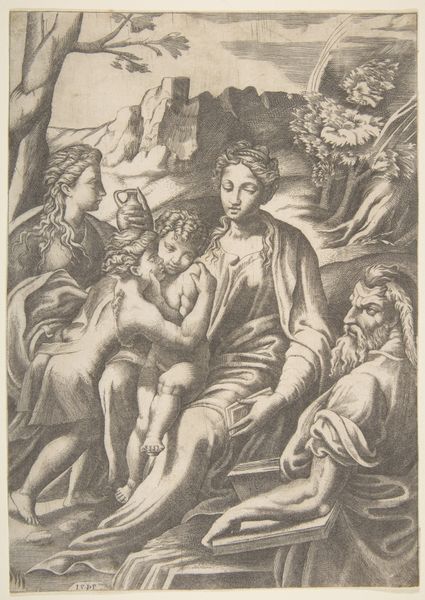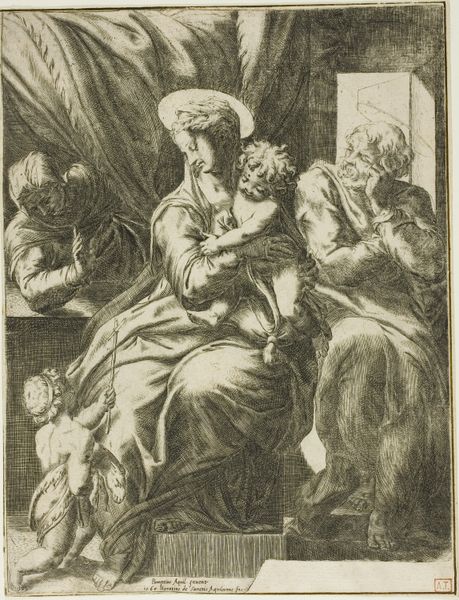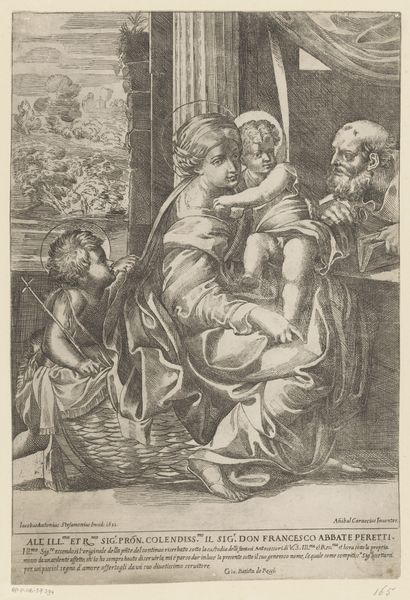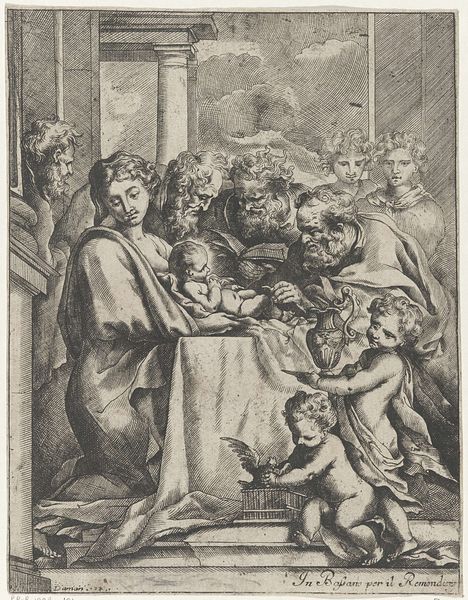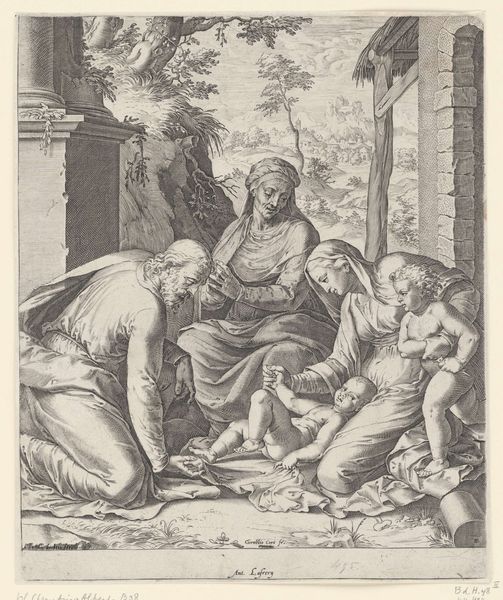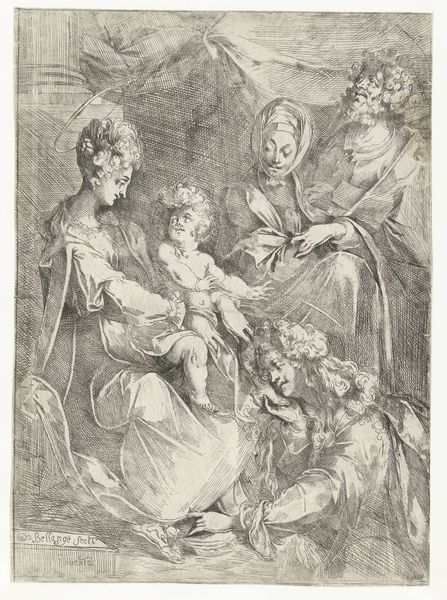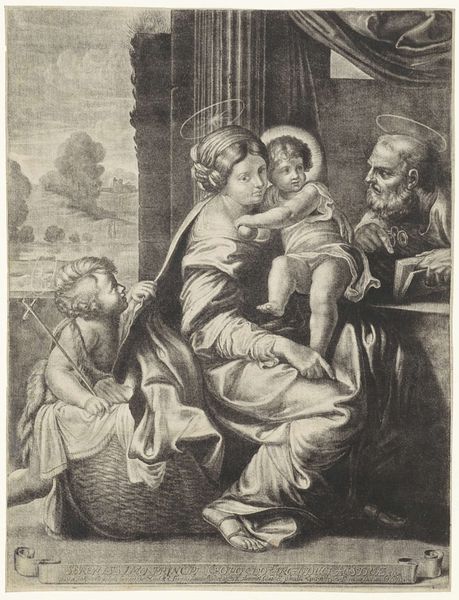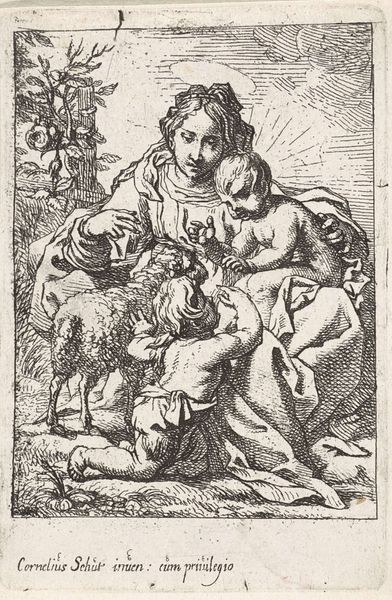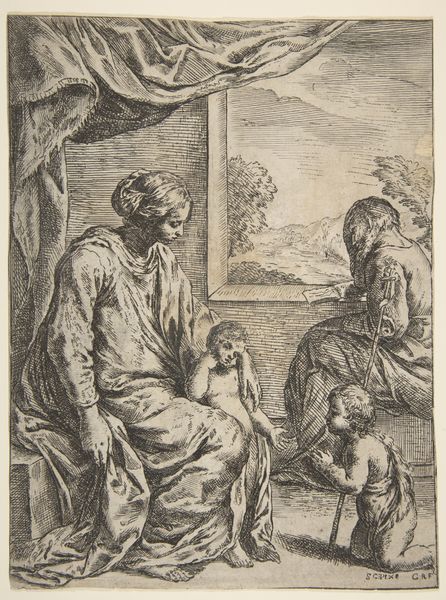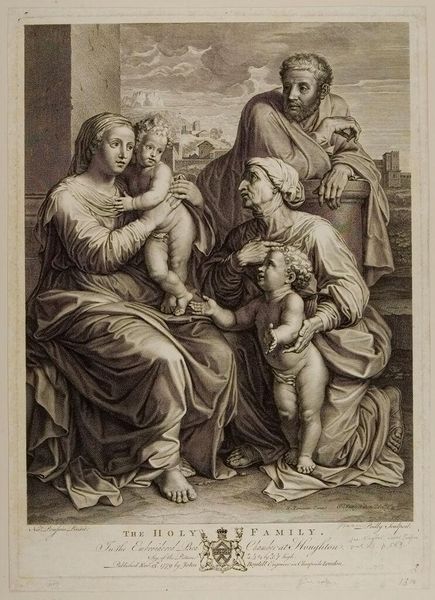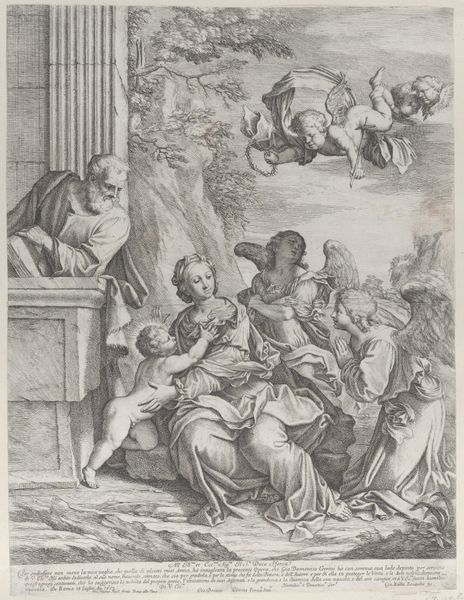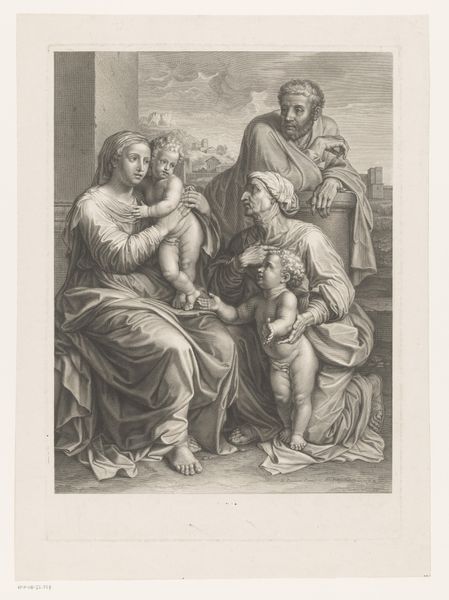
print, engraving
# print
#
figuration
#
11_renaissance
#
history-painting
#
italian-renaissance
#
engraving
Dimensions: height 346 mm, width 213 mm
Copyright: Rijks Museum: Open Domain
Curator: Here we have "Maria met het Christuskind en heiligen", a print created sometime between 1501 and 1580 by Giulio Bonasone, currently residing here at the Rijksmuseum. Editor: My eye is immediately drawn to the density of figures and the relatively monochromatic nature of the print. There's a fascinating interplay of light and shadow that shapes the composition, giving it an almost sculptural feel despite being two-dimensional. Curator: Precisely! Bonasone was deeply immersed in the artistic milieu of the Italian Renaissance. The work showcases his adeptness with engraving and its capacity to circulate images of religious significance. Prints such as this facilitated wider access to artistic representations, enabling individuals beyond the elite circles to engage with such iconography. Editor: The composition definitely adheres to classical ideals—a clear pyramidal structure with Mary at the apex, but it feels a little restless; it's packed with detail. Do you think the medium, engraving, influences this aesthetic? Curator: Undeniably. Engravings, because of their capacity for producing detailed line work, became a powerful means of spreading religious and classical visual concepts throughout Europe. Look closely at the positioning of key figures, which may provide contextual clues. Notice also how those with status within the Church surround them. Editor: Yes, on one side of Mary is a bishop. I'm also curious about the figure below Mary, at the right. Who is that? Curator: The figure there seems to represent Saint Anne, mother of Mary. And, interestingly, nestled near Saint Anne’s robes, we find a somewhat grotesque, demon-like creature which some scholars propose stands as the embodiment of sin being overcome by holiness, and adds a layer of complex symbolism. Editor: Ah, a fascinating detail! Despite the rigid poses, that undercurrent of implied movement keeps the eye engaged. You've also made me reconsider my initial thought. It's not necessarily a work promoting Classical harmony as it’s using its structural means to highlight and contrast themes related to Christian dogma. Curator: This engraving, by bringing the divine closer to the everyday through mass reproduction, played a significant role in disseminating religious ideas throughout society. Editor: And examining how it contrasts clarity and chaos helps me appreciate that blend of faith and artistry that defines much of Renaissance visual culture. Thank you for illuminating aspects of the image that were initially beyond my understanding!
Comments
No comments
Be the first to comment and join the conversation on the ultimate creative platform.
